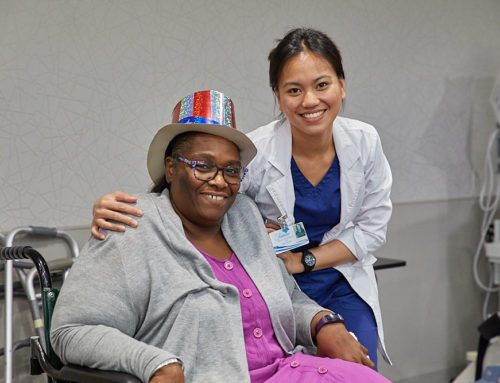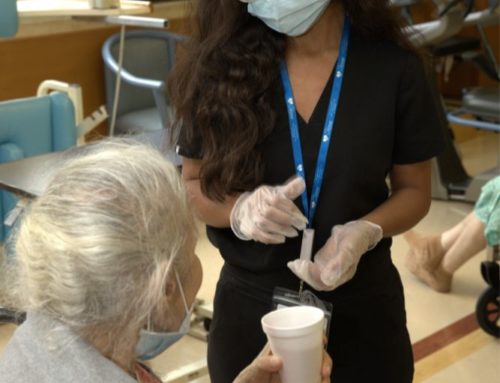Receiving IV Therapy In A Nursing Home: What’s Involved?
Many adults and seniors come to Fairview rehab and nursing home in Queens NY for IV (intravenous) therapy. If you or someone you love has been told that they need IV therapy, you might be wondering what is involved and how it can help.
Intravenous therapy has a wide application
Most nursing homes have clients and patients who need IV therapy, but you shouldn’t think of this treatment as one that is solely for the elderly. In fact, IV therapy is prescribed to adults of all ages and with all sorts of conditions.

In fact, if you’ve ever had a drip in the hospital, that was a type of IV therapy. Delivering medicines and fluids directly into a vein means that they are introduced much faster to the body. Your veins are pathways in the circulatory system which travels all over your body. You can imagine IV therapy as somewhat like getting straight onto the highway’s fast lane versus getting stuck in city traffic.
There are three main reasons why this treatment method is prescribed: To provide fluids, to administer medications, and to give blood transfusions. As you can imagine, lots of individuals require IV therapy for a range of reasons. These include but are not limited to:
- People with an inability to eat or drink normally.
- Those on a high-dose antibiotic schedule.
- Dehydration and/or electrolyte imbalance.
- Individuals who have lost blood in an accident.
- People who are lacking in essential vitamins and minerals.
- Some cancer patients.
- Individuals with an illness that interferes with the normal absorption of essential nutrients.
Getting an IV treatment in a skilled nursing home
Skilled nurses insert a direct vein access tube, called a catheter, in one of two places. Either in a peripheral vein (the most common) or on a central vein (least common).
Peripheral means a vein in your hand, wrist, arm, legs, or feet. Central means the doctor will install a direct line via a larger vein in the torso. Because there is an increased risk of infection, central lines (sometimes called ports) are not used very often.
Once the nurse has access to your vein, they can hook up the required fluids, medicine, or blood. This is usually delivered from a bag that hangs above the entry point.
Although this might sound uncomfortable, it rarely causes patients any discomfort.
Proper IV therapy
Of late, IV therapy has become a bit of a buzzword and IV clinics are appearing around the country. These should not be confused with the proper IV therapy that is offered in a skilled nursing facility. More often than not, these IV clinics just provide vitamins and may do so incorrectly.
Furthermore, unskilled staff with poor medical knowledge may make mistakes and cause further health issues rather than heal them.
Receiving IV therapy in a nursing home or care setting is a great way to get you back on your feet again, if you battle with a serious condition. Don’t hesitate to contact us to find out how we can help, If you have any questions about our therapies.
This article contains informational and educational materials and does not replace health or medical advice. For questions or concerns regarding your medical condition or health objectives, speak to a qualified physician or healthcare provider.






Leave A Comment